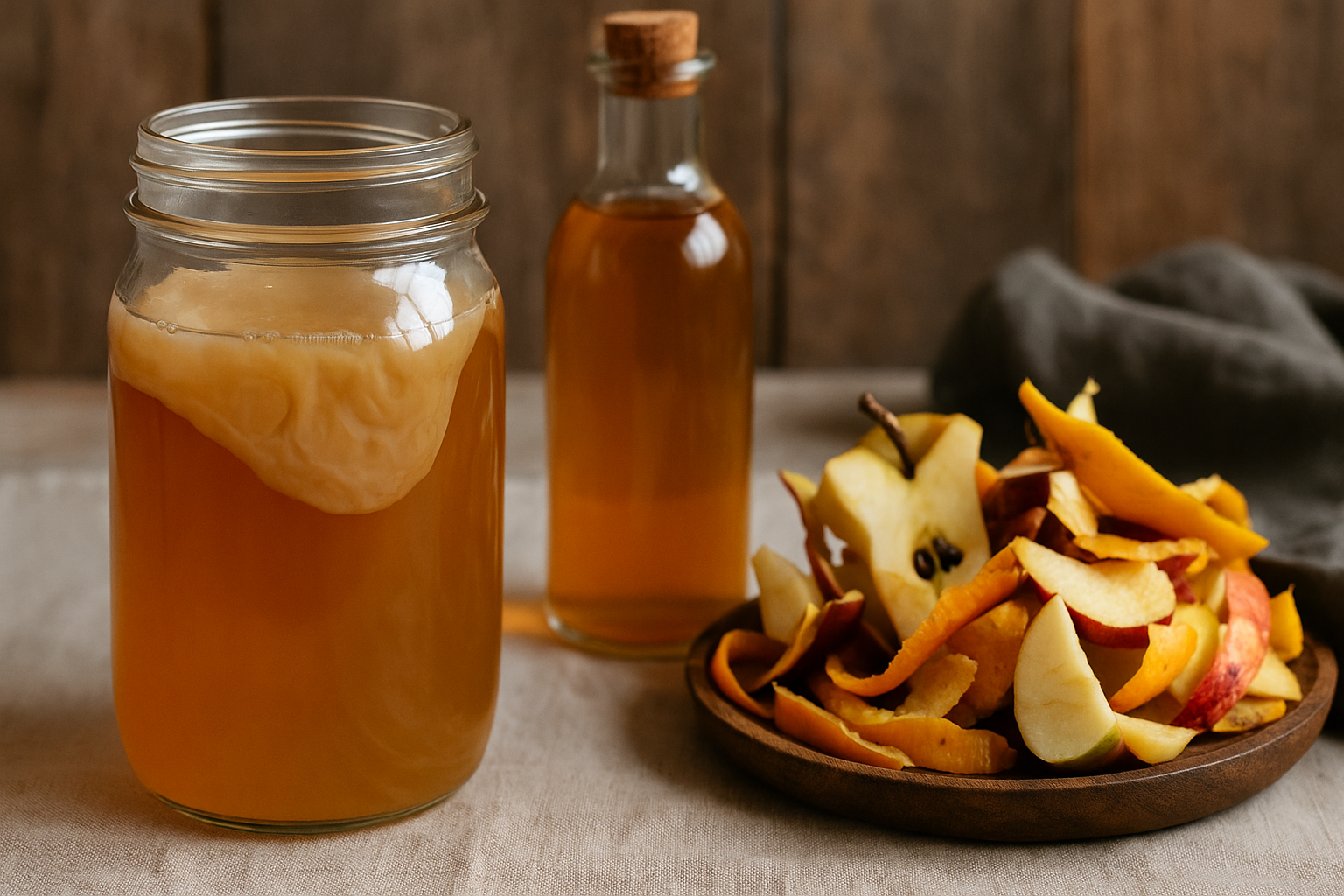
5 Benefits of Homemade Vinegar (and Why It Beats Shop-Bought)
Most of us treat vinegar as a background ingredient – something sharp from a bottle. But when you ferment your own vinegar at home, you unlock a lot more flavour and flexibility than most supermarket options can offer.
Quick Answer
Homemade vinegar gives you richer flavour, more control, less waste and lower cost compared with many shop-bought bottles. You can turn fruit scraps, leftover wine or cider into complex vinegars that suit your cooking style. The key is understanding how acetic acid bacteria work and how to keep the culture healthy – that’s what my vinegar book walks you through, step by step.
What this article covers
This is not a full recipe. Instead, it explains why you might want to make vinegar at home in the first place – so you can decide if it’s worth learning the method properly.
1. Better flavour and aroma
Live acetic acid bacteria don’t just make acetic acid; they produce a whole mix of flavour compounds as they work. When you ferment slowly, you get vinegar that is:
- Less harsh and one-dimensional
- More fruity or wine-like, depending on the base
- Layered enough to drizzle, not just splash into dressings
2. Use up fruit scraps and leftovers
Apple cores, bruised pears, leftover wine or flat cider can all become vinegar. Instead of throwing them away, you convert them into something with a long shelf life and real value in the kitchen.
3. Full control over strength and style
With homemade vinegar you decide:
- How sharp or mellow it tastes
- Whether you keep the “mother” in the jar or strain it out
- Which fruits, juices or wines you use as the base
Commercial vinegar has to be standardised. At home you can keep small batches all slightly different – for example, a strong cider vinegar for chutneys and a softer berry vinegar for salads.
4. It’s cheap once you’re set up
After the first batch, you have a living culture you can keep using. Your main costs are:
- Basic sugar or alcohol in the starting liquid
- Jars or demijohns you can reuse
- A bit of patience while the bacteria do their work
That’s it. Per bottle, homemade vinegar can work out far cheaper than buying good-quality specialty vinegars.
5. A gentle introduction to fermentation
Vinegar is a good first project if you’re interested in fermentation but don’t want to start with vegetables straight away. It teaches you about:
- How microbes transform sugar into acid over time
- Why oxygen, warmth and surface area matter
- What a healthy vinegar “mother” looks like
Homemade vs shop-bought: when each makes sense
Supermarket vinegar is convenient and consistent, and there is absolutely nothing wrong with using it for pickles or cleaning. Homemade vinegar comes into its own when you want:
- A drizzle-worthy vinegar for salads or finishing dishes
- A way to use up leftovers and reduce waste
- A live culture you can keep feeding and reusing
Ready to try making your own?
My book Homemade Vinegar – A Beginner’s Guide gives clear, tested methods for:
- Fruit scrap vinegars (apple, berry and more)
- Wine and cider vinegar
- Looking after the vinegar “mother”
- Knowing when it’s ready and how strong it is
- Troubleshooting cloudy, slow or strange-smelling batches
Learn the full method, safely
If you like the idea of turning leftovers into something useful – and you want to avoid guesswork – this book will walk you through each step with UK-friendly ingredients and measurements.
See “Homemade Vinegar – A Beginner’s Guide” Browse all books